Members Login

Channels
Special Offers & Promotions
Anasys Instruments
Products
Contact Anasys Instruments
All articles from Anasys Instruments
NIST Researchers Enabled by AFM-IR to Publish first Nanoscale IR Spectra of Individual Plasmonic Nanostructures
Oct 30, 2014
Anasys report on EPFL researchers applying AFM-based infrared spectroscopy to the study of drug resistant bacteria
Jul 19, 2013
Anasys report on the Lorentz Contact Resonance imaging mode now available for their afm+ and nanoIR systems
Apr 14, 2013
Anasys to discuss major improvements to its AFM-IR nanoscale spectroscopy product family at Pittcon 2013
Feb 19, 2013
Anasys adds arbitrary polarization control to the nanoIR, the nanoscale IR spectroscopy system
Mar 12, 2012
Media Partners


 The analysis of cultural heritage materials presents a number of challenges such as: limited and extremely small samples, complexity of sample structure, the importance of maintaining spatial integrity and, most notably, the rarity of the samples. These limitations present specific challenges for the identification of many traditional organic dyes, particularly in paintings that may have multiple original paint layers (depending on the artist’s...
The analysis of cultural heritage materials presents a number of challenges such as: limited and extremely small samples, complexity of sample structure, the importance of maintaining spatial integrity and, most notably, the rarity of the samples. These limitations present specific challenges for the identification of many traditional organic dyes, particularly in paintings that may have multiple original paint layers (depending on the artist’s... Researchers from the NIST Center for Nanoscale Science and Technology (CNST) and the University of Maryland have used photothermal induced resonance (PTIR) to characterize individual plasmonic nanomaterials in order to obtain absorption maps and the first examples of absorption spectra with nanometer-scale resolution. Nanostructuring of plasmonic materials enables engineering of their resonant optical response and creates new opportunities for applications that benefit from...
Researchers from the NIST Center for Nanoscale Science and Technology (CNST) and the University of Maryland have used photothermal induced resonance (PTIR) to characterize individual plasmonic nanomaterials in order to obtain absorption maps and the first examples of absorption spectra with nanometer-scale resolution. Nanostructuring of plasmonic materials enables engineering of their resonant optical response and creates new opportunities for applications that benefit from... Corrosion is of primary concern in many industrial sectors, including oil, transportation, infrastructure, nuclear, and even bio-technology. At the University of Manchester, the Corrosion and Protection Centre has one of the world’s largest academic bases focused on corrosion and its control. Professor Stuart Lyon is the Director of Research and AkzoNobel Professor of Corrosion Control in the School of Materials. His research interests are...
Corrosion is of primary concern in many industrial sectors, including oil, transportation, infrastructure, nuclear, and even bio-technology. At the University of Manchester, the Corrosion and Protection Centre has one of the world’s largest academic bases focused on corrosion and its control. Professor Stuart Lyon is the Director of Research and AkzoNobel Professor of Corrosion Control in the School of Materials. His research interests are... Francesco Simone Ruggeri is a member of the Doctoral Program in the group of Professor Giovanni Dietler, head of the Laboratory of the Physics of Living Matter at the École Polytechnique Fédérale de Lausanne (EPFL). The research activity of the laboratory of physics of living matter is mainly devoted to the study of DNA topology, cellular machines, protein mechanics and high-resolution low temperature Atomic Force Microscopy (AFM)...
Francesco Simone Ruggeri is a member of the Doctoral Program in the group of Professor Giovanni Dietler, head of the Laboratory of the Physics of Living Matter at the École Polytechnique Fédérale de Lausanne (EPFL). The research activity of the laboratory of physics of living matter is mainly devoted to the study of DNA topology, cellular machines, protein mechanics and high-resolution low temperature Atomic Force Microscopy (AFM)...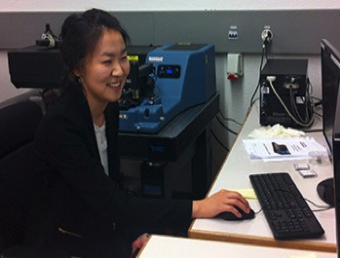 Proteins aggregating into amyloid structures are involved in important neurodegenerative disorders such as Alzheimer’s and Parkinson’s disease. During aggregation, initially monomeric proteins undergo internal structural rearrangement forming amyloid fibrils with a universal cross β -sheet quaternary structure. During fibrillation, several coexisting amyloidogenic species are formed and the study of these species would allow...
Proteins aggregating into amyloid structures are involved in important neurodegenerative disorders such as Alzheimer’s and Parkinson’s disease. During aggregation, initially monomeric proteins undergo internal structural rearrangement forming amyloid fibrils with a universal cross β -sheet quaternary structure. During fibrillation, several coexisting amyloidogenic species are formed and the study of these species would allow...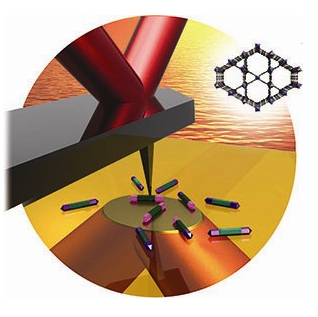
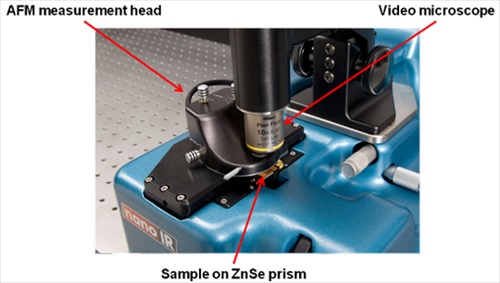 The award is given by the New York Microscopy Society and will be presented at the 2014 Eastern Analytical Symposium and Exhibition being held November 17-19, Somerset, New Jersey, USA. Professor Alexandre Dazzi, from the Laboratoire de Chimie Physique at the Université Paris-Sud has been selected to receive the New York Microscopy Society’s Ernst Abbe Award. Since its inception in 1973, 24 scientists have been recognized including innovators such as Albert V. Crewe (inventor of Scanning Electron Transmission Microscopy), Edwin H. Land (inventor of Polaroid photography), Gerd Binning & Heinrich Rohrer (inventors of AFM)...
The award is given by the New York Microscopy Society and will be presented at the 2014 Eastern Analytical Symposium and Exhibition being held November 17-19, Somerset, New Jersey, USA. Professor Alexandre Dazzi, from the Laboratoire de Chimie Physique at the Université Paris-Sud has been selected to receive the New York Microscopy Society’s Ernst Abbe Award. Since its inception in 1973, 24 scientists have been recognized including innovators such as Albert V. Crewe (inventor of Scanning Electron Transmission Microscopy), Edwin H. Land (inventor of Polaroid photography), Gerd Binning & Heinrich Rohrer (inventors of AFM)...
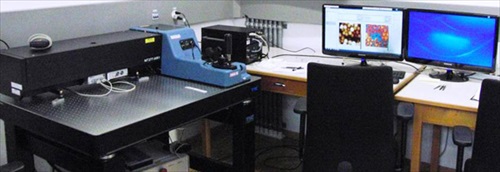 École Polytechnique Federale de Lausanne, better known as EPFL, has recently reported on how a group of its scientists have used powerful imaging techniques including nanoIR to support a study which sheds light on photosynthesis. All plants use a form of photosynthesis to produce energy, though not all rely exclusively on it. In higher plants, capturing light takes place in specialized compartments called thylakoids. These are found in cell organelles called chloroplasts, which are the equivalent of a power station for the plant....
École Polytechnique Federale de Lausanne, better known as EPFL, has recently reported on how a group of its scientists have used powerful imaging techniques including nanoIR to support a study which sheds light on photosynthesis. All plants use a form of photosynthesis to produce energy, though not all rely exclusively on it. In higher plants, capturing light takes place in specialized compartments called thylakoids. These are found in cell organelles called chloroplasts, which are the equivalent of a power station for the plant.... Anasys Instruments is proud to announce the
Anasys Instruments is proud to announce the 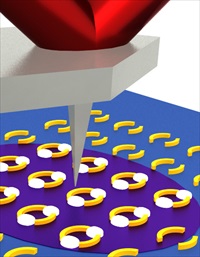
 Researchers from the National Institute of Standards and Technology (NIST) and the University of Maryland have shown how to make nanoscale measurements of critical properties of plasmonic nanomaterials—the specially engineered nanostructures that modify the interaction of light and matter for a variety of applications, including sensors, cloaking (invisibility), photovoltaics and therapeutics. Their technique is one of the few that allows researchers to make actual physical measurements of these materials at the nanoscale without affecting the nanomaterial's function...
Researchers from the National Institute of Standards and Technology (NIST) and the University of Maryland have shown how to make nanoscale measurements of critical properties of plasmonic nanomaterials—the specially engineered nanostructures that modify the interaction of light and matter for a variety of applications, including sensors, cloaking (invisibility), photovoltaics and therapeutics. Their technique is one of the few that allows researchers to make actual physical measurements of these materials at the nanoscale without affecting the nanomaterial's function...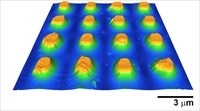 Recent progress in the engineering of plasmonic structures has enabled new kinds of nanometer-scale optoelectronic devices as well as high-resolution optical sensing. But until now, there has been a lack of tools for measuring nanometer-scale behavior in plasmonic structures which are needed to understand device performance and to confirm theoretical models...
Recent progress in the engineering of plasmonic structures has enabled new kinds of nanometer-scale optoelectronic devices as well as high-resolution optical sensing. But until now, there has been a lack of tools for measuring nanometer-scale behavior in plasmonic structures which are needed to understand device performance and to confirm theoretical models...
 Under the leadership of Professor Giovanni Dietler, the research activity of the laboratory of physics of living matter is mainly devoted to the study of DNA topology, cellular machines, protein mechanics and high-resolution low temperature Atomic Force Microscopy (AFM). Through internal and external collaborations, a certain number of other research activities are carried out in particular on knots hydrodynamics, DNA gel electrophoresis, cell elasticity, cell motility, etc. Kulik and his colleagues are measuring the mechanical properties of proteins, cells and tissues. To date, AFM has been the main tool but is now complemented with the arrival of a nanoIR™ AFM-IR system from Anasys...
Under the leadership of Professor Giovanni Dietler, the research activity of the laboratory of physics of living matter is mainly devoted to the study of DNA topology, cellular machines, protein mechanics and high-resolution low temperature Atomic Force Microscopy (AFM). Through internal and external collaborations, a certain number of other research activities are carried out in particular on knots hydrodynamics, DNA gel electrophoresis, cell elasticity, cell motility, etc. Kulik and his colleagues are measuring the mechanical properties of proteins, cells and tissues. To date, AFM has been the main tool but is now complemented with the arrival of a nanoIR™ AFM-IR system from Anasys...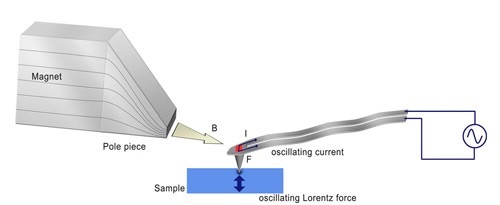 The Lorentz Contact Resonance imaging mode further enhances the capabilities of the afm+ and nanoIR systems from Anasys. LCR allows rapid broadband nanomechanical measurements over a range of temperatures. LCR imaging differentiates between multiple components of a sample and allows precise location of the probe for subsequent chemical or thermal analysis with nanoscale resolution...
The Lorentz Contact Resonance imaging mode further enhances the capabilities of the afm+ and nanoIR systems from Anasys. LCR allows rapid broadband nanomechanical measurements over a range of temperatures. LCR imaging differentiates between multiple components of a sample and allows precise location of the probe for subsequent chemical or thermal analysis with nanoscale resolution... This family of instrumentation includes the nano-TA™ which provides nanoscale thermal property measurements and the nanoIR™ platform which has pushed the barriers of the field of nanoscale IR measurement to new levels of resolution. User-feedback has led to a number of new capabilities being added to systems bringing greater benefit in terms of resolution and instrument performance...
This family of instrumentation includes the nano-TA™ which provides nanoscale thermal property measurements and the nanoIR™ platform which has pushed the barriers of the field of nanoscale IR measurement to new levels of resolution. User-feedback has led to a number of new capabilities being added to systems bringing greater benefit in terms of resolution and instrument performance...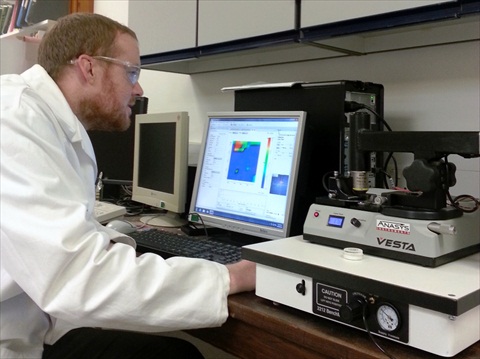
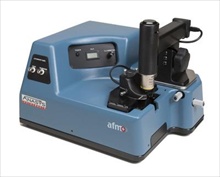 Anasys Instruments, the company that pioneered nanoscale thermal analysis and nanoscale IR spectroscopy using an AFM, has chosen the Fall 2011 MRS meeting to introduce a brand new, easy-to-use research and analysis tool. The afm+ is the first fully integrated AFM platform to offer three important analytical capabilities...
Anasys Instruments, the company that pioneered nanoscale thermal analysis and nanoscale IR spectroscopy using an AFM, has chosen the Fall 2011 MRS meeting to introduce a brand new, easy-to-use research and analysis tool. The afm+ is the first fully integrated AFM platform to offer three important analytical capabilities...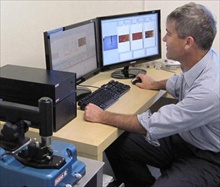 Anasys Instruments' AFM-IR system is featured in a new keynote publication in this month's issue of Applied Spectroscopy: Spatial Differentiation of Sub-Micrometer domains in a Poly(hydroxyalkanoate) copolymer using instrumentation that combines Atomic Force Microscopy (AFM) and Infrared (IR) Spectroscopy...
Anasys Instruments' AFM-IR system is featured in a new keynote publication in this month's issue of Applied Spectroscopy: Spatial Differentiation of Sub-Micrometer domains in a Poly(hydroxyalkanoate) copolymer using instrumentation that combines Atomic Force Microscopy (AFM) and Infrared (IR) Spectroscopy... Anasys Instruments' AFM-IR system has been recognized by Microscopy Today in the receipt of the 2011 Innovation Award. It was presented to CEO, Roshan Shetty, at the 2011 M&M Annual conference held this year in Nashville, TN. The AFM-IR technique was developed by Dr. Alexandre Dazzi at the University of Paris-Sud. It uses an AFM probe as the IR absorbance detector and hence obtains IR spectroscopy at up to 2 orders of magnitude better than traditional IR spectroscopy...
Anasys Instruments' AFM-IR system has been recognized by Microscopy Today in the receipt of the 2011 Innovation Award. It was presented to CEO, Roshan Shetty, at the 2011 M&M Annual conference held this year in Nashville, TN. The AFM-IR technique was developed by Dr. Alexandre Dazzi at the University of Paris-Sud. It uses an AFM probe as the IR absorbance detector and hence obtains IR spectroscopy at up to 2 orders of magnitude better than traditional IR spectroscopy...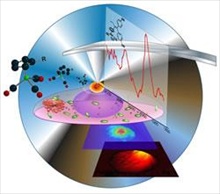 Anasys Instruments is pleased to report the publication and highlighting of a "hot paper" from a group of leading French scientists in the leading scientific journal, Angewandte Chemie. The paper address a molecular mapping challenge using the exciting technique of AFM-IR, the combination of an atomic force microscope (AFM) and IR spectroscopy...
Anasys Instruments is pleased to report the publication and highlighting of a "hot paper" from a group of leading French scientists in the leading scientific journal, Angewandte Chemie. The paper address a molecular mapping challenge using the exciting technique of AFM-IR, the combination of an atomic force microscope (AFM) and IR spectroscopy... Anasys Instruments is pleased to announce that Dr William P King has been appointed as the Bliss Professor of Engineering at the University of Illinois at Urbana-Champaign. In addition to his faculty position at UIUC, Dr. King serves as a key scientific advisor to Anasys Instruments...
Anasys Instruments is pleased to announce that Dr William P King has been appointed as the Bliss Professor of Engineering at the University of Illinois at Urbana-Champaign. In addition to his faculty position at UIUC, Dr. King serves as a key scientific advisor to Anasys Instruments...